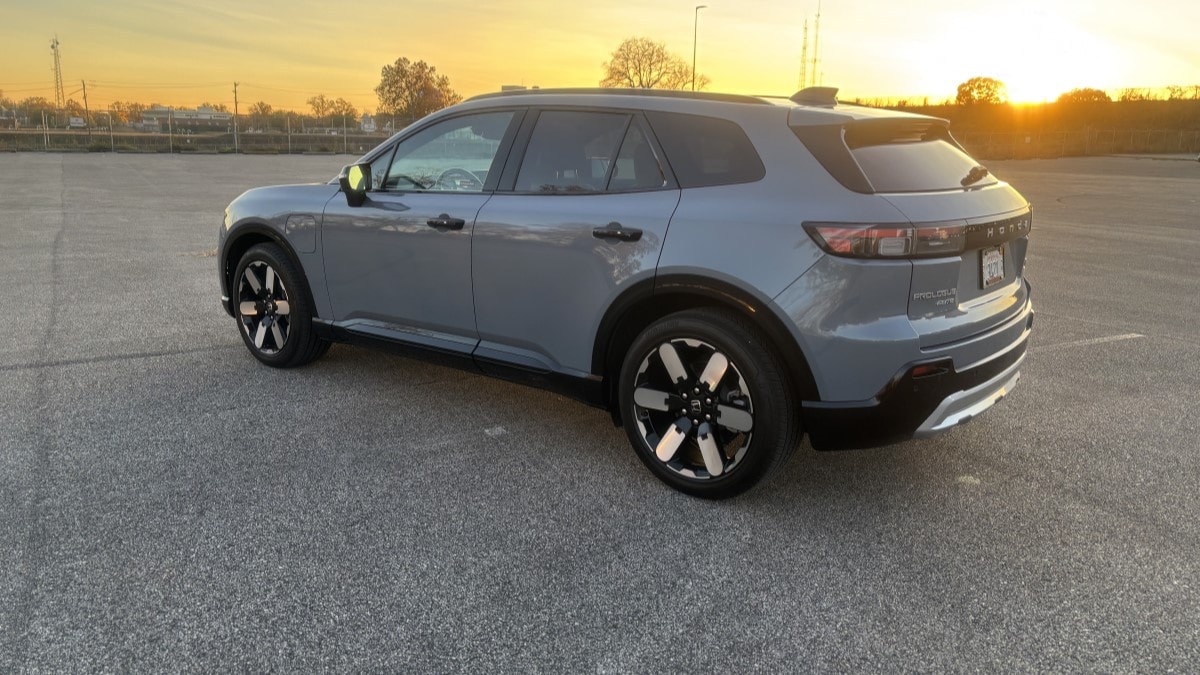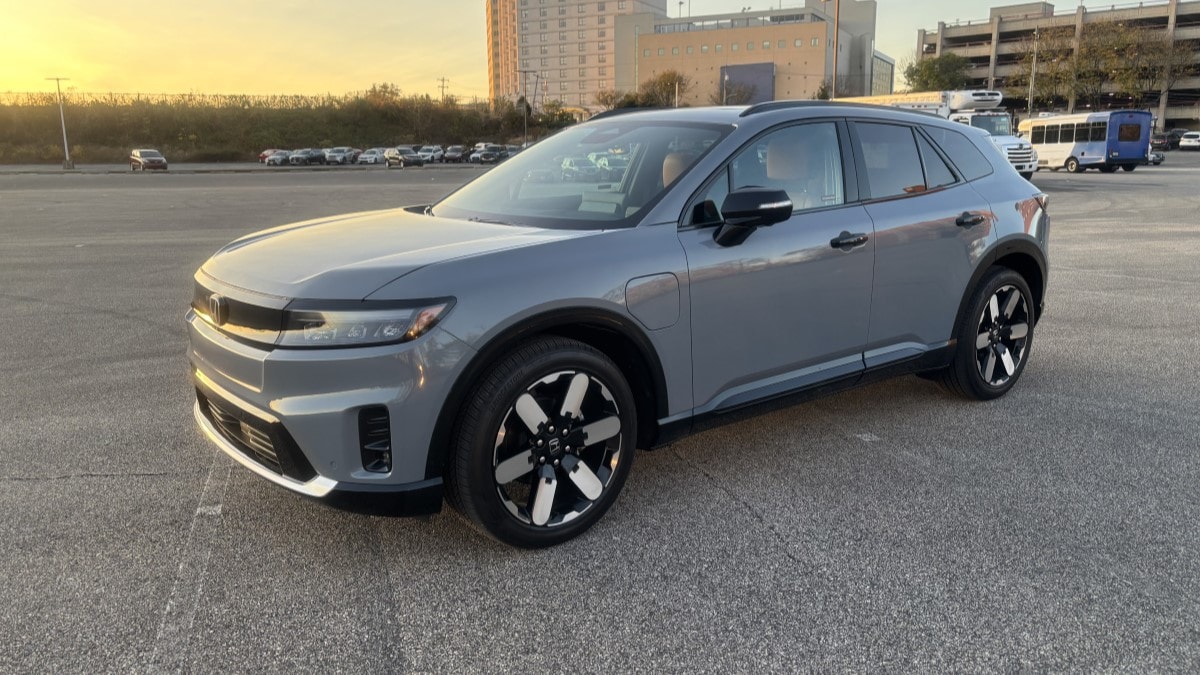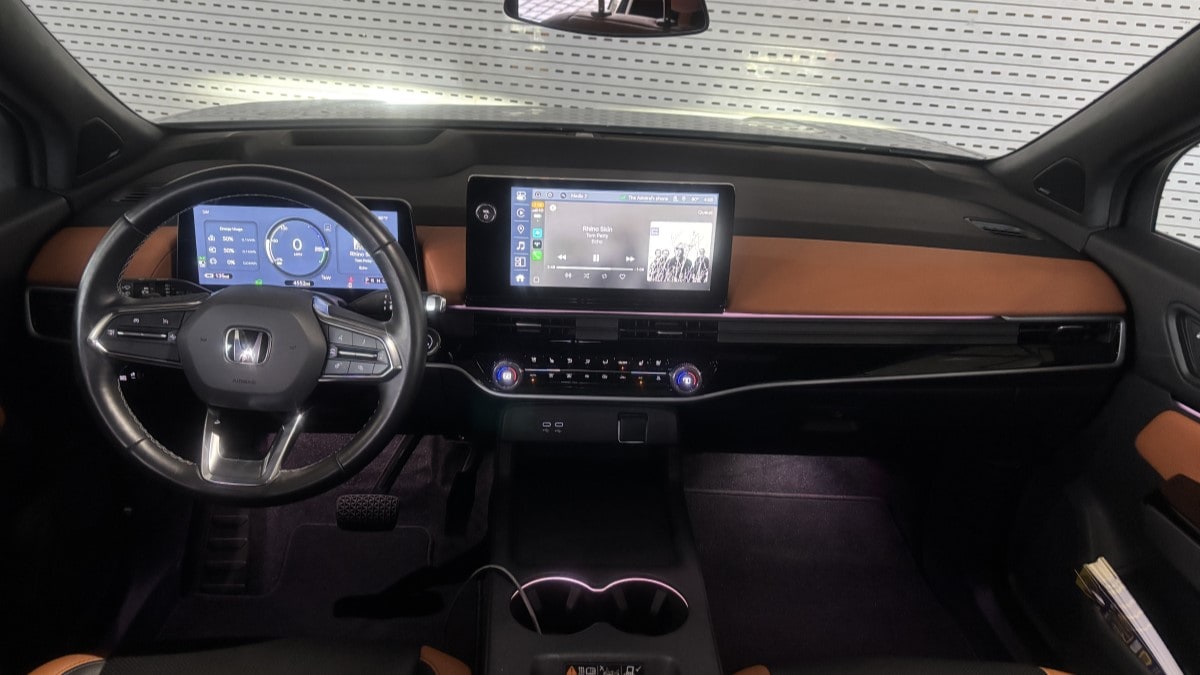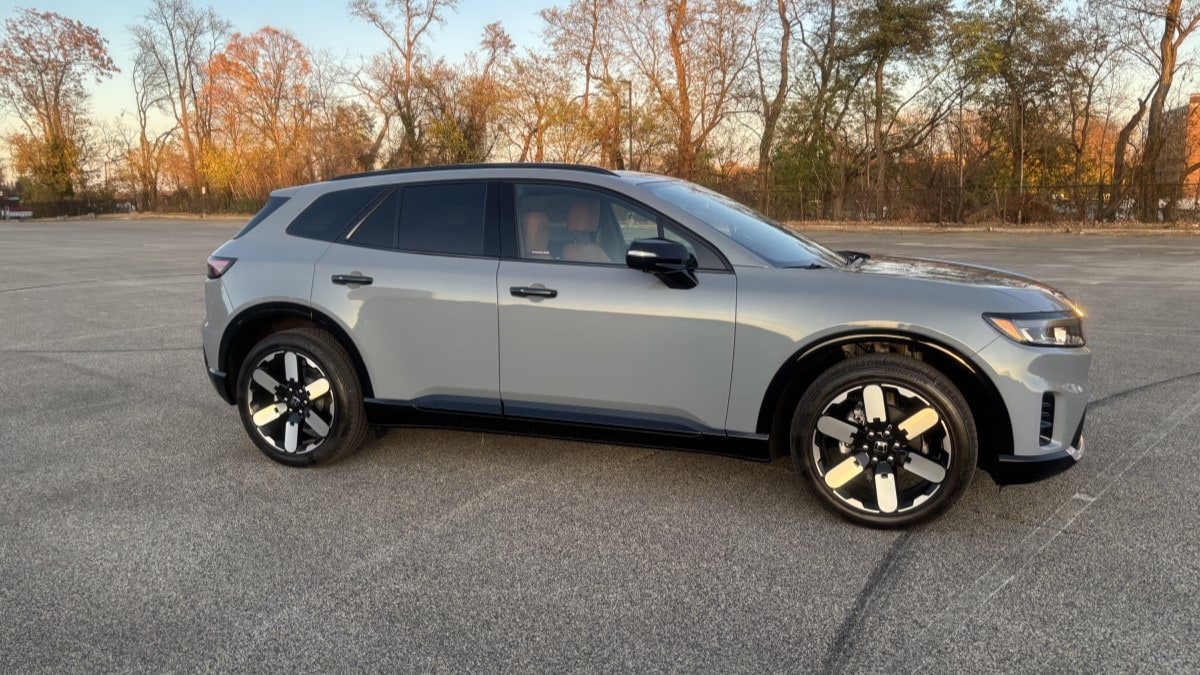A quirk that tells a story about both the automotive industry and American shoppers: the best-selling electric vehicle (EV) built on General Motors’ EV platform last quarter was the 2024 Honda Prologue.
Yes, you read that right. The Prologue is the sort of joint production that happens in the automotive industry from time to time. It’s built with a mix of GM and Honda parts, based on GM technology retuned by Honda engineers.
That sort of cooperation has given the world some cars we’re lucky to have. In an era with few mainstream rear-wheel drive (RWD) sports coupes, we have two — the Toyota GR86 and Subaru BRZ — thanks to a partnership. Today’s Aston Martins run mostly on Mercedes-AMG engines.
But it also poses a quandary for shoppers. Honda has a large crowd of loyalists who swear by its quality. Can they trust what is, under the skin, almost a Chevy Blazer EV in Honda clothing?
In a week in the Prologue, including a road trip well past its range, I found it a pleasant car to live with and a pretty convincing Honda despite its mixed pedigree.
The Prologue gives buyers another choice — always a good thing — in the growing midsize electric SUV market. It will be the right choice for some. But, if you like this adopted sibling, there are reasons to take a look at its biological brothers from GM as well.
My tester was a Prologue all-wheel drive (AWD) Elite model in Snowfall Pearl, with a retail price of $59,750, including the mandatory $1,395 delivery fee. It was also a pre-production model, meaning it was close enough to finalized that Honda was comfortable loaning it to a journalist; but also that the company might make small tuning changes before releasing it for sale.

What’s This About Skateboards?
A quick explanation before we dig in: two dissimilar EVs from the same brand may have a lot more in common with each other than two dissimilar gas-powered cars. That’s because automakers build EVs on so-called “skateboard platforms.”
A skateboard platform is a nearly flat combination of batteries, motors, suspension, and steering components. Engineers can scale them up or down to build vehicles of different sizes and add or subtract more motors to vary performance.
GM builds one platform for all of its current EVs. They used to call it “Ultium” before declaring earlier this year that it no longer has a name. NotUltium powers cars as small as the compact Chevrolet Equinox EV and as large as the gargantuan GMC Hummer EV. Yes, those two very different vehicles share most of their parts.
Honda is hard at work developing its own skateboard for a full lineup of EVs it plans to call the Honda 0 Series. We’ll get our first up-close look at it soon.
But, rather than wait for it to be ready, Honda decided it liked The Platform Formerly Known As Ultium enough to build a Honda on it. Hence, the Prologue shares most of its mechanical parts with GM’s electric midsize SUVs: the Blazer EV and the Cadillac Lyriq.
Honda says everything about it has been “optimized by Honda engineers.” But, if you spend time in different cars regularly, finding GM switches and knobs blended into Honda styling feels a bit odd. If you buy the car, I’d venture to guess that you’d forget about this quickly.

Electric Horses are Faster Than Gas-Powered Horses
My tester had an electric motor on each axle for a total output of 288 horsepower and 333 lb-ft of torque. That horsepower rating is approximately what Honda considers appropriate for a midsize SUV — its Passport 2-row SUV gets 280 hp and the Pilot 3-row 285 hp, both from V6 engines. But the torque rating is higher —262 in the gas-powered models.
That’s telling. Electric motors provide all of their torque instantly rather than building it up over time. That makes them faster off the line than you might expect. The Prologue acquitted itself well in highway driving.
Steering effort is light — perhaps a bit lighter than Honda loyalists are used to. A little more weight would have felt Passport-like. But light steering is welcome on long drives.
Honda advertises a range of 273 miles for the version I tested. I got a little less in real-world driving, but I was in a hurry to get from Washington, D.C., to Philadelphia and didn’t drive with efficiency in mind.
Recharging from a DC fast charger was about average. But I took my trip with a companion in a Hyundai Ioniq 6. We both plugged in with battery percentage in the low 20s, and she reached her car’s full 342-mile range long before I reached the Prologue’s 273.
Day to day, you won’t notice that much. Few EV owners drain their batteries far enough in daily driving for charging speed to mean much. On a road trip, though, the Prologue’s charging time is a slight limitation.
Tailored Look
Honda has moved to a rugged, off-road-oriented look for its other midsize SUVs, the Passport and Pilot. The Prologue has a more tailored look, with no hint that it’s ready for the trail. I found it handsome.
The Prologue may be part Chevrolet underneath, but the look is Honda crisp. A thin faux grille flanked by headlights and LED daytime running lights clearly draws inspiration from the current Accord but with EV sleekness.

Stylish Space
The Prologue’s cabin is a nice mix of conventional and spacious.
Electric cars lack transmissions. Thus, they lack the transmission hump that runs down the center of a gas-powered car’s cabin. That leaves designers with a choice — create a false one to give drivers what they’re used to or leave the space open to lend an airy feel to the cabin. Honda split the difference, with a floating center console between the front seats with storage space beneath and no divider at all in the back.
The result gives you a little more utility than you’re used to but keeps a classic feel. My tester’s two-tone leather seats were handsome, and I’m a fan of how Honda places a central touchscreen high so your eyes can pass back and forth between the screen and the road without much adjustment.
A steeply raked rear window gives you a slightly limited view out the back, but the problem isn’t severe enough to bother you for long.
A similarly steep angle to the front glass creates an unusually large windshield that might not be easy to keep clean. But neither of these problems is severe enough to keep most buyers away.

Honda Enough for Most
Ultimately, the Prologue feels enough like a Honda to convince most longtime Honda loyalists. It only borrows from GM things that work well.
At KBB, we’re increasingly fans of GM’s smooth Super Cruise hands-free highway driving system. I find myself missing it in a car that feels so much like other cars that have it. If you like the Prologue, I think there’s an argument for test-driving a Chevrolet Blazer EV or Equinox EV to experience Super Cruise with virtually identical performance to the Prologue.
But, if you prefer to own a Honda, the brand’s first electric vehicle (in the U.S.) is a pleasant option. It’s probably the best-selling product on this skateboard platform because Honda has a deep well of loyalty earned over decades of reliable cars. It’s not necessarily a better car than the others. But it does feel like a Honda. That’s a selling point for some. If you’re one of them, the Prologue is a comfortable choice you’ll likely enjoy.








